So you’ve got your new freshwater tropical fish aquarium all set up and running. Now you just need to add fish. But what are the best freshwater tropical fish to start out with?
You should look for fish that:
- can survive and thrive in varying water conditions
- can eat a variety of foods
- won’t outgrow your aquarium
- get along with other kinds of fish and are not aggressive
It’s best to get small, schooling fish and gradually build one school at a time, a few fish at a time.
SOME OF THE BEST FRESHWATER TROPICAL FISH FOR A NEW AQUARIUM
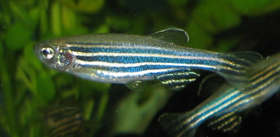
Zebra Danios
Zebra Danios are very fast, active fish that can survive in different water conditions. They eat high quality flake food, freeze-dried bloodworms and brine shrimp.

Neon Tetras
Neon Tetras are small fish native to South America. Their brilliant red and blue stripes make them look like jewels in your aquarium. They like low light and lots of plants. Neon tetras love big groups, but don’t add a whole school at once. Just introduce a few at a time over a period of 4-6 weeks. They are omnivorous, eating high quality flake food, freeze-dried bloodworms and brine shrimp. You do need to be careful with them as neon tetras are a bit more sensitive to water changes.
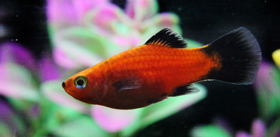
Red Wag Platies
Red Wag Platies sporting bright red bodies with black fins and tails, make a colorful addition to your fish tank. They are peaceful and low maintenance. Red wag platies are omnivorous; they will eat flake food with algae, brine shrimp and freeze-dried bloodworms.
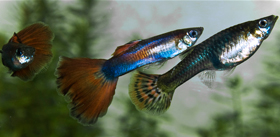
Delta Tail Guppies
Delta Tail Guppies are extremely adaptable freshwater tropical fish and can survive in many environments. They are live bearers and they breed a lot, so if you don’t want a population explosion, you may want to keep only one sex in your aquarium. The males have beautiful, long triangle shaped tails, while the females’ tails are much smaller and less striking. Guppies thrive best in groups. They eat flake food with algae, brine shrimp and mosquito larvae.
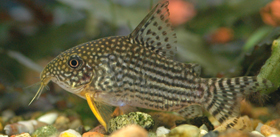
Corydoras Catfish
Corydoras Catfish are a wonderful addition to your freshwater tropical fish aquarium. Like catfish in the wild, they are scavengers and live mostly at the bottom of the tank. They will keep your aquarium clean with their suction-like mouths by eating algae and any food that falls into the gravel. Corydoras catfish are peaceful and easy to care for. You should have at least 3 as they are very social and do best in groups. Their food should include pellets, fish flakes and bottom feeder tablets.
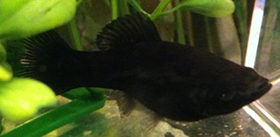
Black Mollies
Black Mollies can live up to 5 years in your aquarium if well cared for. They are prolific breeders and produce live young. Mollies should be kept in larger groups with a ratio of 3 females per male. It’s a good idea to have lots of plants where the babies can hide as mollies will eat their young. The black mollie’s diet includes high quality flake food, bloodworms and brine shrimp.
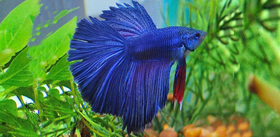
Bettas (Siamese Fighting Fish)
Although bettas are listed as good for a beginner aquarium, some precautions must be taken with these beautiful, brilliantly colored fish. Male bettas will try to kill each other, so you should only keep one in your fish tank. Females get along a little better, but they may still fight and hurt each other. Bettas can be aggressive towards other species of fish as well. Adding a betta to a tank with fish that like to nip is an especially bad idea. This can result in the betta’s long, flowing fins being wounded and may not end well for the nipping fish. Unlike most species of fish, bettas are independent and don’t mind being alone. Therefore, a heated, 5 gallon aquarium with lots of plants and hiding places is a great environment for a single betta. Bettas are carnivorous so their food should be high in shrimp or other fish.
This list is by no means complete and there are many species of freshwater tropical fish that will work well in your new aquarium. No matter what species you decide to add, it’s important to keep your fish tank clean and the water conditions optimal for your finned friends.

